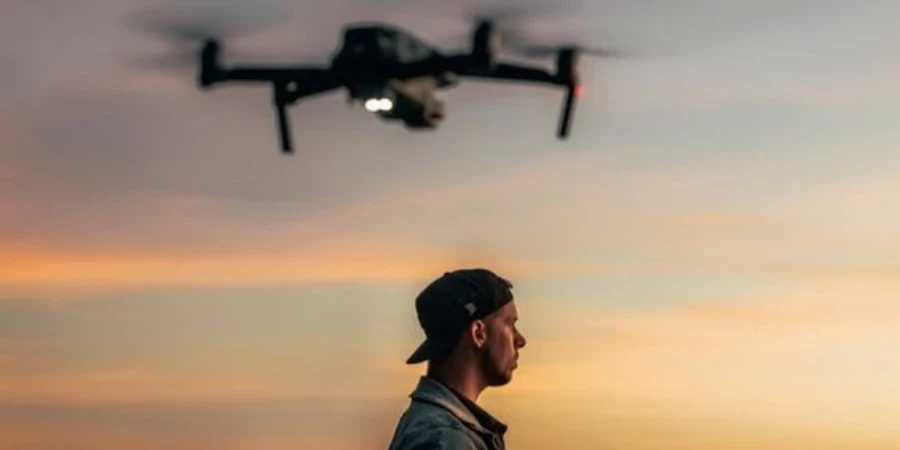In the rapidly evolving world of technology, commercial drones have soared beyond mere fascination to become essential tools across numerous sectors. These flying marvels offer more than just aerial photography; they are reshaping operations in agriculture, real estate, construction, and even delivery services by providing unparalleled efficiency, enhanced safety, and a fresh perspective on data gathering. The ability to access hard-to-reach places, collect vast amounts of information quickly, and execute tasks with precision highlights just a fraction of their potential. As industries continue to recognize the benefits these devices bring to the table, the market for commercial drones is expanding, making it crucial for businesses to understand the nuances of selecting the right drone to meet their specific needs.
Table of Contents
1. Aerial perspectives: Types and applications of commercial drones
2. Navigating the horizon: 2024 commercial drone market insights
3. Essential factors for drone selection
4. Leading the flight: Top commercial drones of 2024
1. Aerial perspectives: Types and applications of commercial drones
The landscape of commercial drones is diverse, catering to a wide array of applications across various industries. These aerial devices have transcended their initial recreational purpose, morphing into vital tools for business operations, data collection, and more.
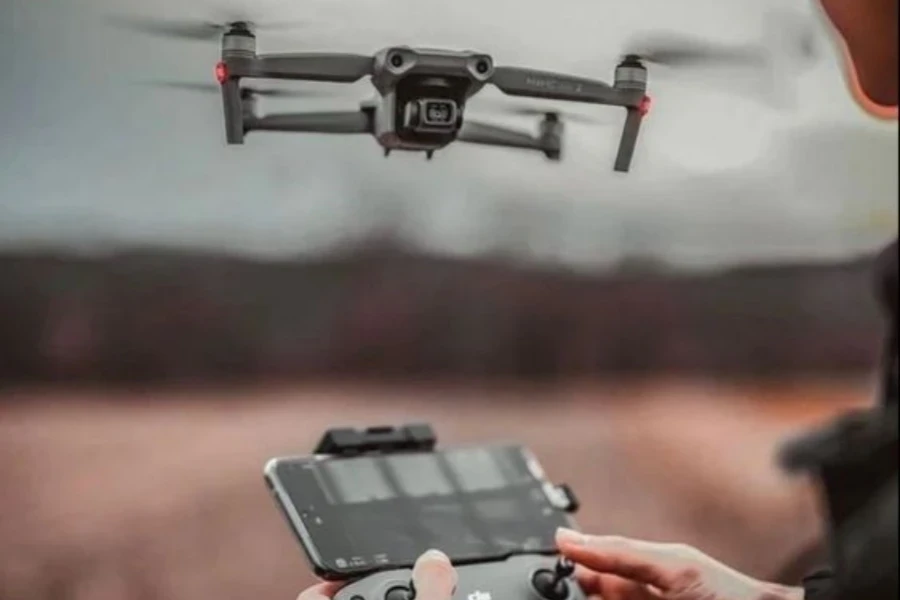
Compact versatility: Sub-250g drones
The segment of sub-250g drones represents the epitome of compact versatility. These lightweight aerial vehicles are especially suited for individuals at the beginning of their drone exploration or businesses in need of low-risk operations. Their minimal weight not only makes them easy to transport and deploy but also often exempts them from stringent regulations that heavier drones are subject to. This category, highlighted by models such as the DJI Mini 4 Pro, offers a blend of accessibility and functionality. Despite their small size, these drones do not compromise on capabilities, providing impressive imaging quality and flight performance that can rival their heftier counterparts.
Professional grade: High-performance drones
At the other end of the spectrum lie the high-performance drones, designed with professional-grade features that cater to the demanding requirements of various industries. These drones are equipped with advanced imaging capabilities, robust obstacle avoidance systems, and extended battery life, ensuring efficiency and safety during operations. Models like the Autel Evo Lite+ and the DJI Air 2S exemplify this category, offering 4K video recording, superior image stabilization, and detailed aerial shots that are crucial for tasks such as surveying, construction monitoring, and agricultural mapping. Their enhanced performance parameters make them the go-to choice for professionals seeking reliable and high-quality aerial data collection tools.
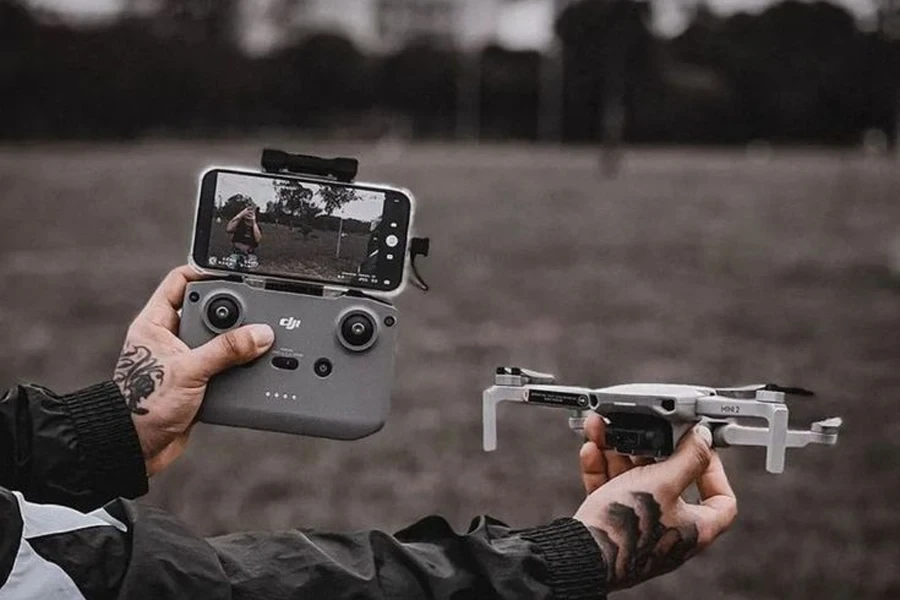
The applications of commercial drones are vast and varied. In agriculture, drones are revolutionizing the way farmers monitor crop health, manage resources, and maximize yields. The construction industry benefits from drones through improved site surveys, project monitoring, and safety inspections, facilitating better project management and cost efficiency. Meanwhile, in real estate, drones provide a unique perspective, offering aerial property views that enhance listings and attract potential buyers.
The selection between compact and high-performance drones hinges on the specific needs and operational requirements of the business. Factors such as the intended use, regulatory considerations, and budget constraints play a pivotal role in determining the most suitable type of drone.
As the commercial drone market continues to evolve, the distinction between compact and professional-grade drones is becoming increasingly blurred, with advancements in technology continually pushing the boundaries of what these remarkable devices can achieve. The choice of drone ultimately depends on balancing the need for mobility and ease of use with the demand for advanced features and capabilities, ensuring that businesses can leverage the full potential of aerial technology to meet their objectives.
2. Navigating the horizon: 2024 commercial drone market insights
The commercial drone market is on an ascendant trajectory, projected to expand significantly in 2024. This growth is not only quantitative, reflecting an increase in sales and usage across industries, but also qualitative, with technological advancements pushing the boundaries of what drones can achieve.

With the global commercial drone market’s trajectory set from $22.4 billion in 2022 to an impressive $166.70 billion by 2031, reflecting a CAGR of 25%, the industry stands at the brink of transformative growth. This expansion underscores the burgeoning integration of drones across diverse commercial applications, highlighting a future where these aerial tools become integral to operational efficiencies and innovative solutions in various sectors.
Growth projections and new entrants
The drone industry is witnessing a surge in innovation and adoption, buoyed by its proven efficacy in operations ranging from aerial photography to logistics. Market analysts predict a robust expansion, with new entrants poised to introduce groundbreaking technologies and functionalities. This influx of innovation is expected to catalyze competition, driving improvements in drone capabilities while potentially lowering costs for end-users. The diversity of applications, from agriculture to emergency response, underscores the sector’s versatility and the broad potential for new deployments.
Regulatory landscape and its impact
Regulations play a pivotal role in shaping the drone market. In the United States, the Federal Aviation Administration (FAA) has been at the forefront, crafting policies that ensure safety without stifling innovation. The regulatory framework is evolving, with recent adjustments aimed at accommodating the growing use of drones while addressing privacy and security concerns. Similarly, international bodies and foreign governments are refining their regulations, striving for a balance that promotes the safe integration of drones into national airspaces.
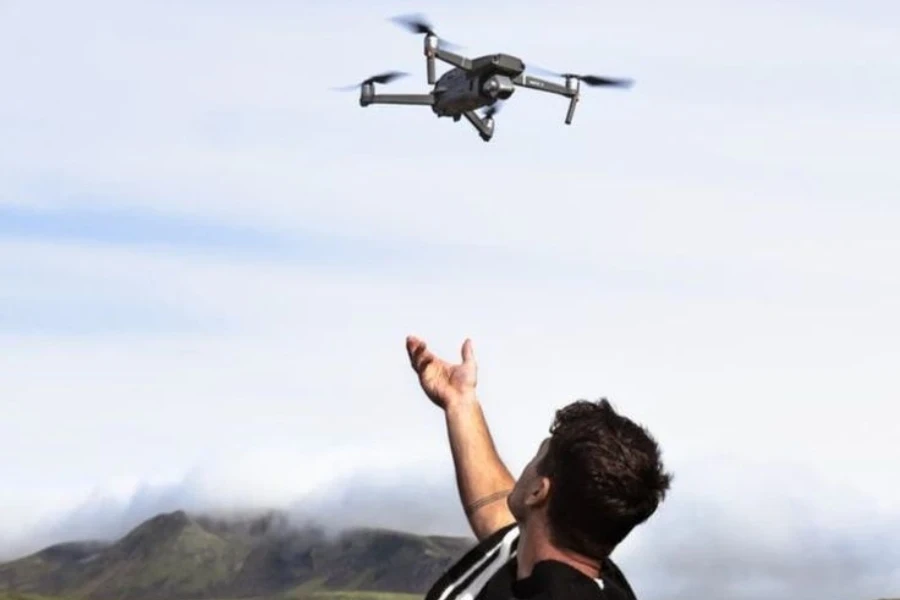
The regulatory environment significantly influences market dynamics, affecting everything from drone design to operational protocols. Manufacturers and operators must stay abreast of these changes to navigate the legal landscape effectively. Compliance not only ensures legal operation but also enhances safety and reliability, key considerations for commercial users.
The interplay between market growth and regulations underscores a dynamic period for the drone industry. As companies innovate to meet and exceed regulatory standards, they unlock new possibilities for drone technology, further expanding their utility across sectors. This symbiotic relationship between innovation and regulation is likely to propel the drone market to new heights, reflecting a mature ecosystem that balances commercial interests with public safety and privacy.
The commercial drone market in 2024 is poised at a confluence of technological advancement and regulatory evolution. With the industry set to welcome new entrants and embrace wider applications, the stage is set for a transformative period. However, the overarching narrative will likely be shaped by how seamlessly these drones integrate into societal frameworks, adhering to evolving regulations while pushing the envelope of innovation.
3. Essential factors for drone selection
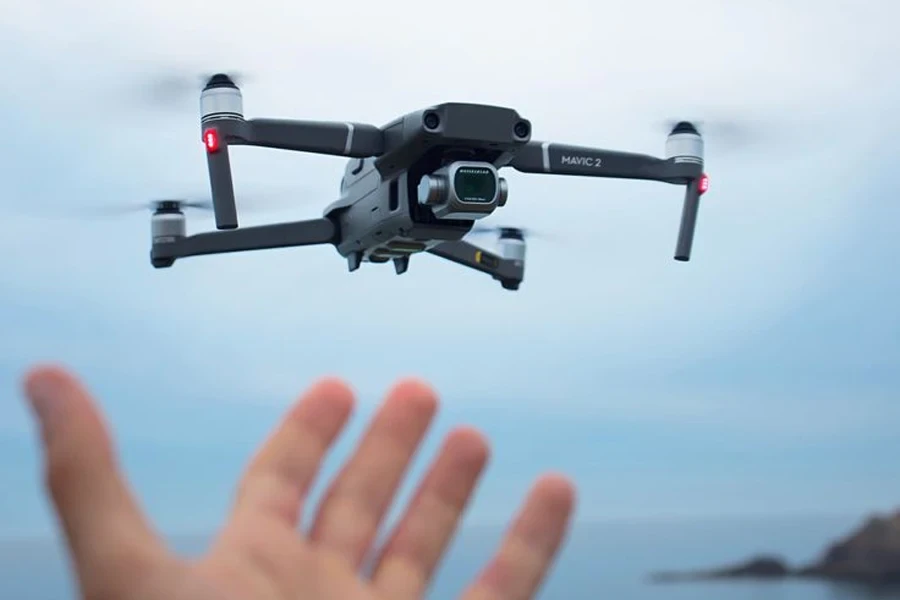
Selecting the right commercial drone involves more than just choosing a reputable brand or the latest model. Several crucial factors must be considered to ensure that the selected drone meets operational requirements and offers the best value for investment. This section delves into the essential considerations that guide the selection process, ensuring that businesses can make informed decisions tailored to their specific needs.
Assessing flight capabilities and battery life
Flight capabilities and battery life are paramount for maximizing operational productivity. A drone’s flight time determines how long it can remain airborne to complete tasks, while its battery efficiency dictates the duration between charges. Longer flight times and efficient battery use are critical for tasks that require extended periods of aerial surveillance or data collection. Drones like the DJI Air 2S and Autel Evo Lite+ have set benchmarks in this aspect, offering substantial flight durations and quick recharge times. This makes them particularly suitable for industries where time is of the essence, such as emergency response and large-scale agricultural monitoring.
Image quality and camera features
The purpose of deploying commercial drones often revolves around their ability to capture high-quality images and videos. Thus, evaluating camera resolution, stabilization features, and low-light performance becomes crucial. High-resolution cameras ensure that the details in the captured images are crisp and clear, which is vital for tasks like infrastructure inspection and geographical mapping. Image stabilization technology, such as gimbal systems, helps in capturing smooth footage even in windy conditions, enhancing the drone’s utility in outdoor operations. Moreover, drones with excellent low-light performance are indispensable for operations during dawn, dusk, or in poorly lit conditions, ensuring versatility across various scenarios.

Safety features and obstacle avoidance
The integration of safety technologies in drones not only protects the investment but also ensures the safety of operators and bystandies. Obstacle avoidance systems, such as those found in the DJI Mini 4 Pro, use sensors to detect and navigate around obstacles, significantly reducing the risk of collisions. These features are especially beneficial in complex environments with many obstructions, such as urban areas or dense forests. Additionally, features like automatic return-to-home activate in situations where the drone loses connection with the controller or when the battery is low, ensuring the drone’s safe return.
The selection of a commercial drone hinges on a careful assessment of its flight capabilities, imaging prowess, and integrated safety features. These factors are critical in ensuring that the drone not only meets the specific operational needs but also offers reliability, safety, and efficiency. With the commercial drone market continuously evolving, staying informed about the latest advancements and models becomes essential in making an informed selection that aligns with business objectives.
4. Leading the flight: Top commercial drones of 2024
As the commercial drone industry evolves, certain models have emerged as leaders in their respective categories, showcasing advanced features that cater to a wide range of commercial tasks. The DJI Mini 4 Pro, Autel Evo Lite+, and Ryze Tello stand out in 2024 for their unique capabilities and value propositions, each catering to different segments of the market.
DJI Mini 4 Pro: A compact powerhouse
The DJI Mini 4 Pro epitomizes the fusion of compact design with high-end functionality. Despite its sub-250g frame, this drone boasts advanced obstacle avoidance systems, ensuring safe navigation in complex environments. Its camera quality is remarkable for its size, offering crisp 4K video and high-resolution stills that are indispensable for commercial tasks requiring detailed aerial imagery. The Mini 4 Pro’s balance of portability, safety, and imaging capabilities makes it an ideal choice for professionals seeking a lightweight yet powerful drone.
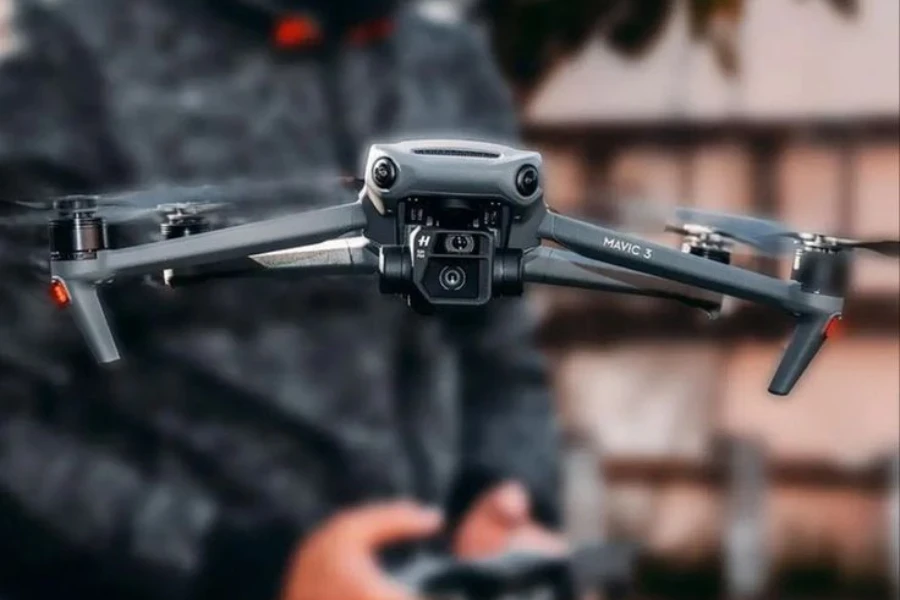
Autel Evo Lite+: A DJI challenger
Emerging as a formidable competitor to the well-established DJI lineup, the Autel Evo Lite+ has carved its niche with features that appeal to a broad spectrum of commercial drone users. Its standout features include an adjustable aperture, allowing for greater control over imaging in varied lighting conditions, and extended flight times that surpass many competitors. These capabilities, coupled with its robust build and 4K video recording, position the Evo Lite+ as an attractive option for those requiring a versatile drone with exceptional endurance and imaging flexibility.
Ryze Tello: The budget-friendly beginner’s choice
For novices and educational purposes, the Ryze Tello presents an unbeatable value proposition. Its ease of use, combined with a surprisingly capable camera for its price point, offers a practical entry into drone technology. While it may lack the advanced features of higher-end models, the Tello’s affordability and user-friendly interface make it an excellent tool for introducing drone technology in educational settings or for individuals beginning their journey into aerial photography and videography.
These models represent the pinnacle of commercial drone technology in 2024, each serving distinct market needs from entry-level exploration to professional-grade aerial imaging. Their leading status is a testament to the continuous innovation within the drone industry, providing tools that enhance productivity, safety, and creativity across various commercial applications. As the market continues to expand and diversify, the significance of selecting the right drone for specific commercial tasks becomes increasingly paramount, underscoring the importance of understanding each model’s unique features and capabilities.
Conclusion
The trajectory of the global commercial drone market is set on an unprecedented growth path, with its valuation expected to leap from $22.4 billion in 2022 to a staggering $166.70 billion by 2031. This remarkable expansion, forecasted at a CAGR of 25%, underscores the escalating adoption of drone technology across diverse sectors. This surge not only highlights the burgeoning demand for aerial innovations but also signals the vast potential drones hold in transforming commercial operations, offering a glimpse into a future where aerial efficiency and innovation redefine industry standards.
